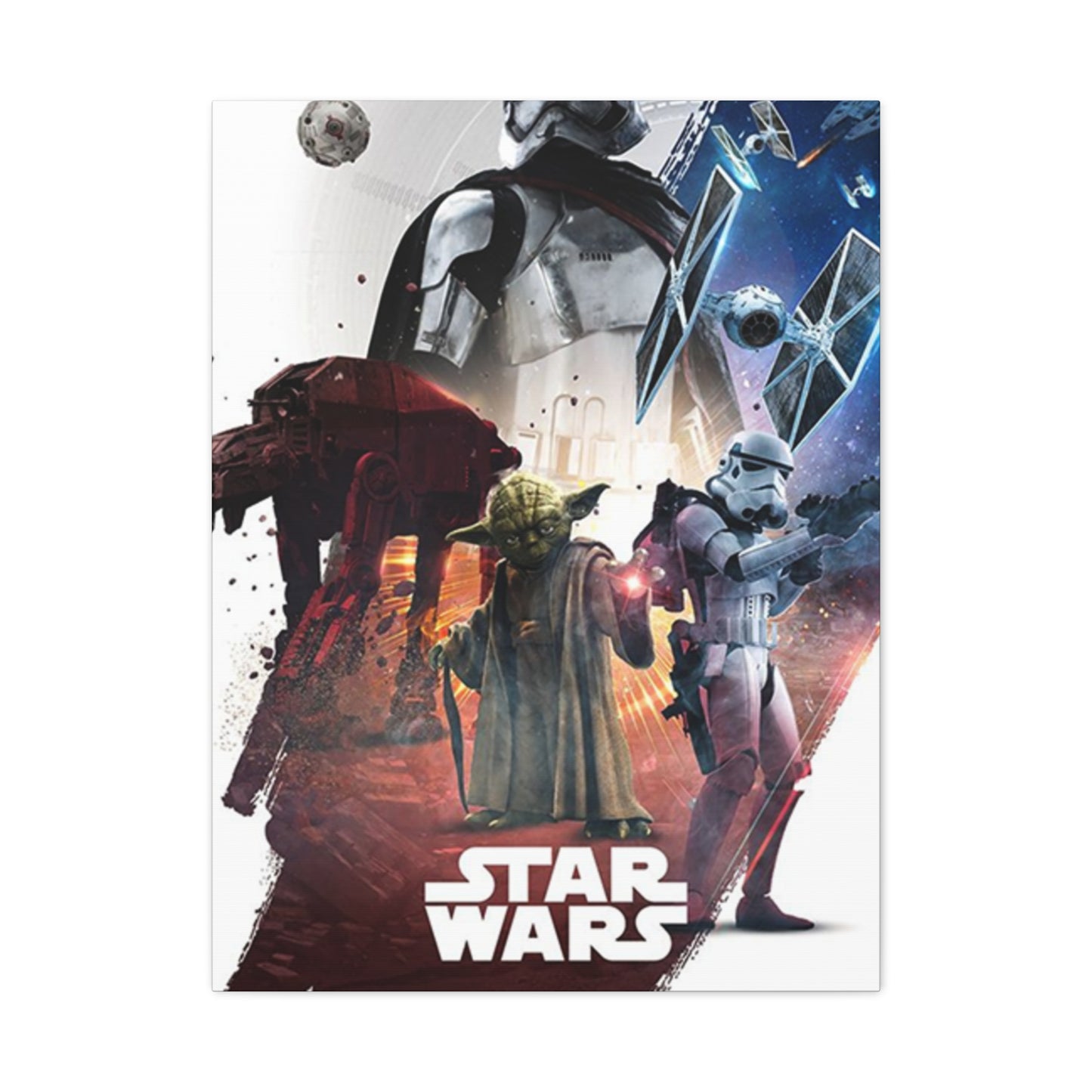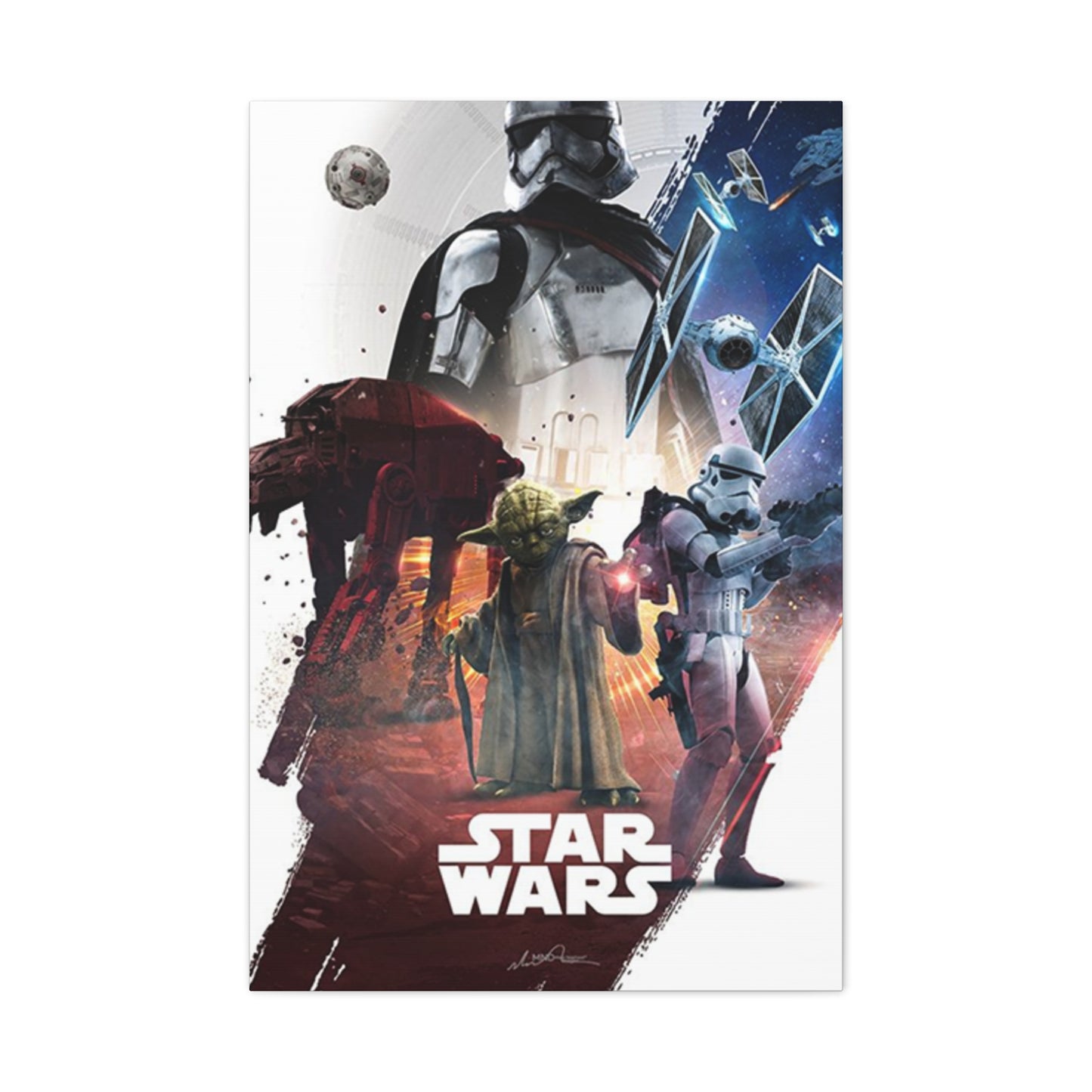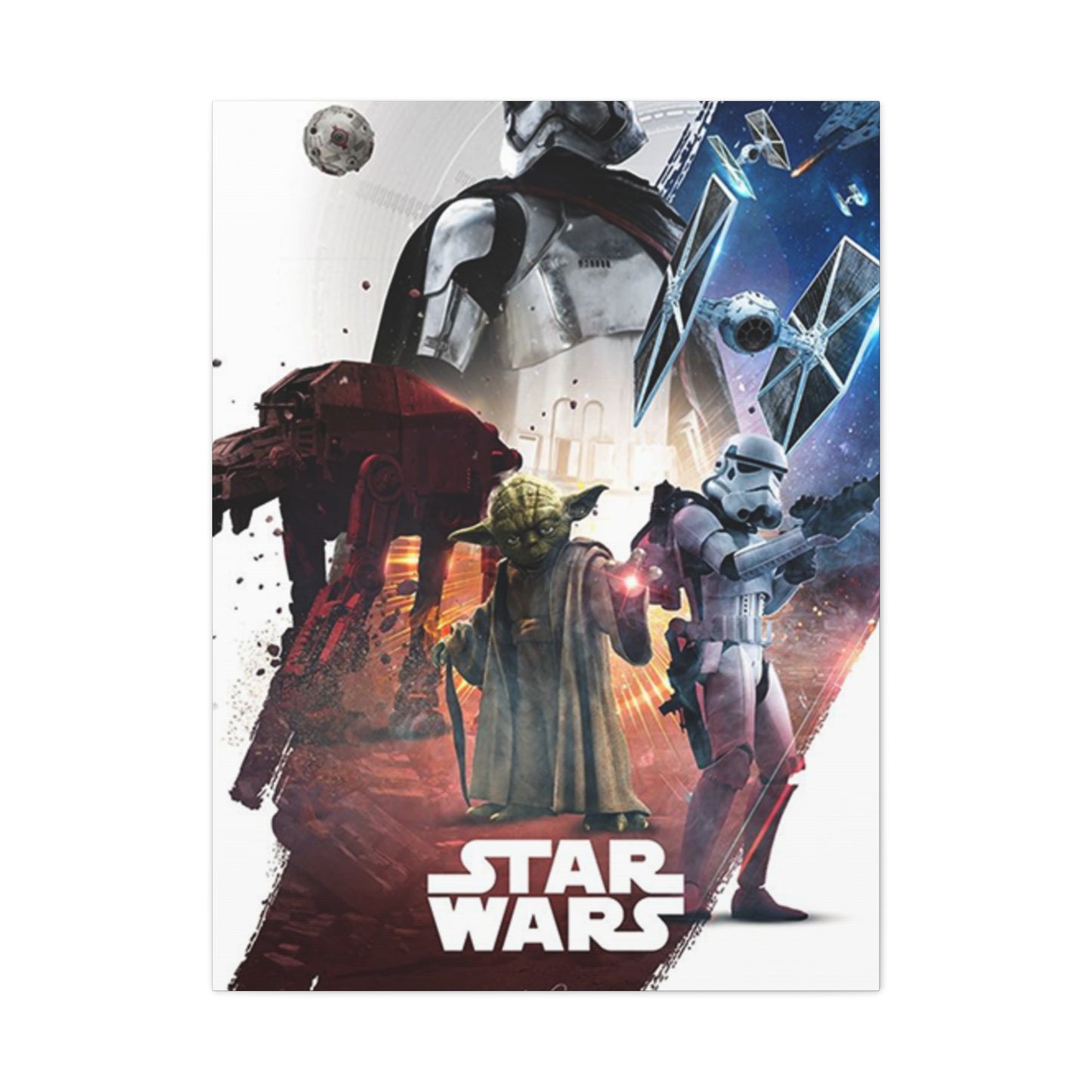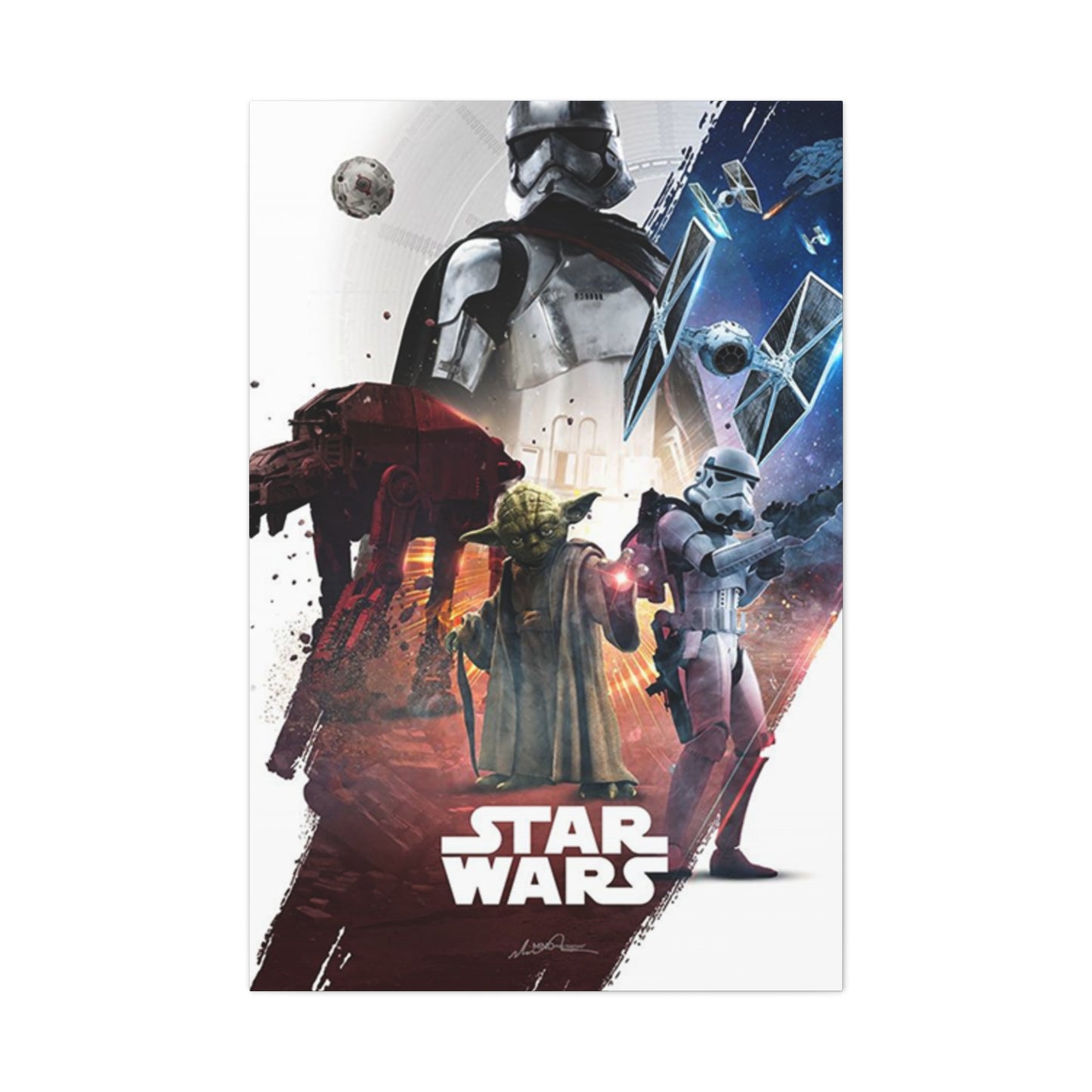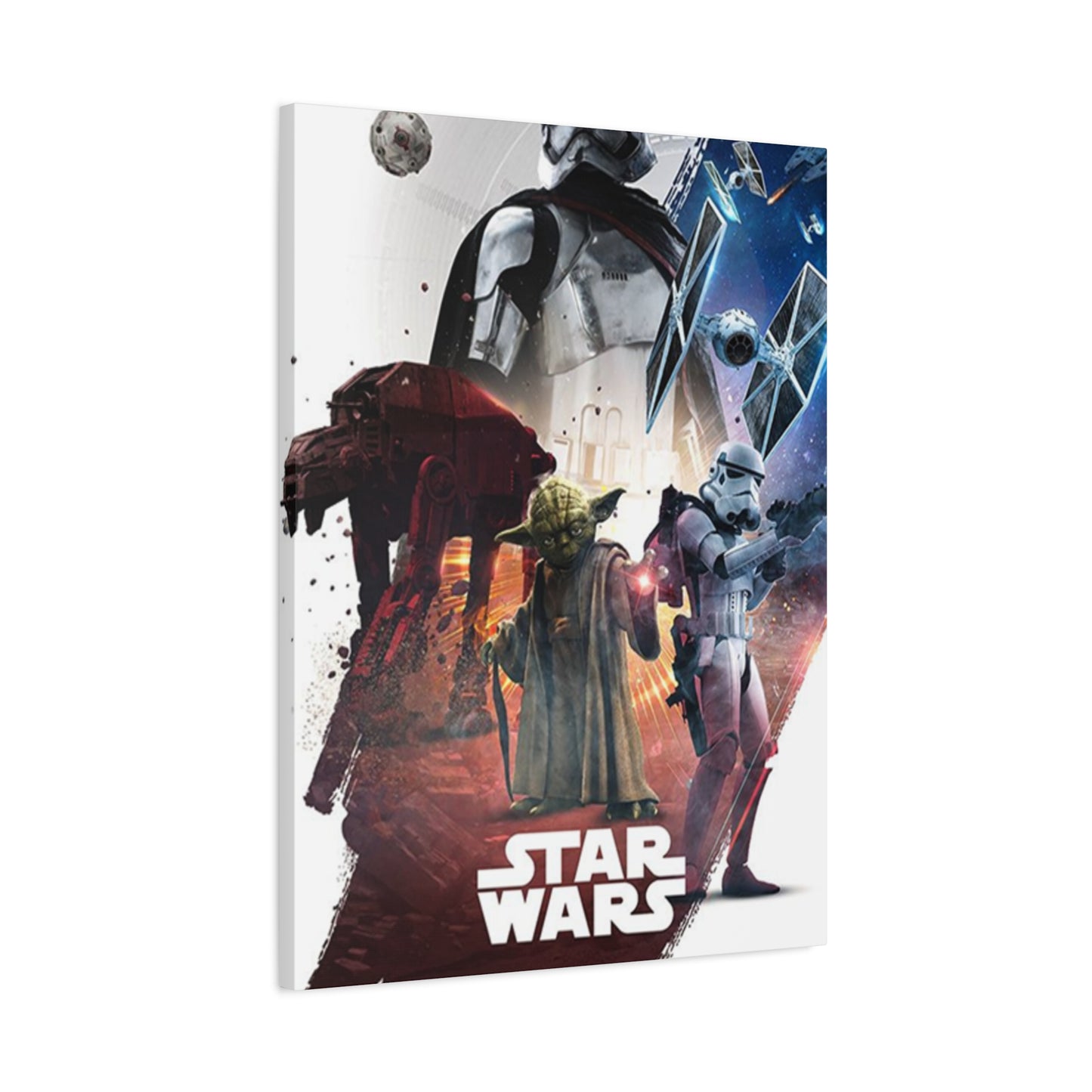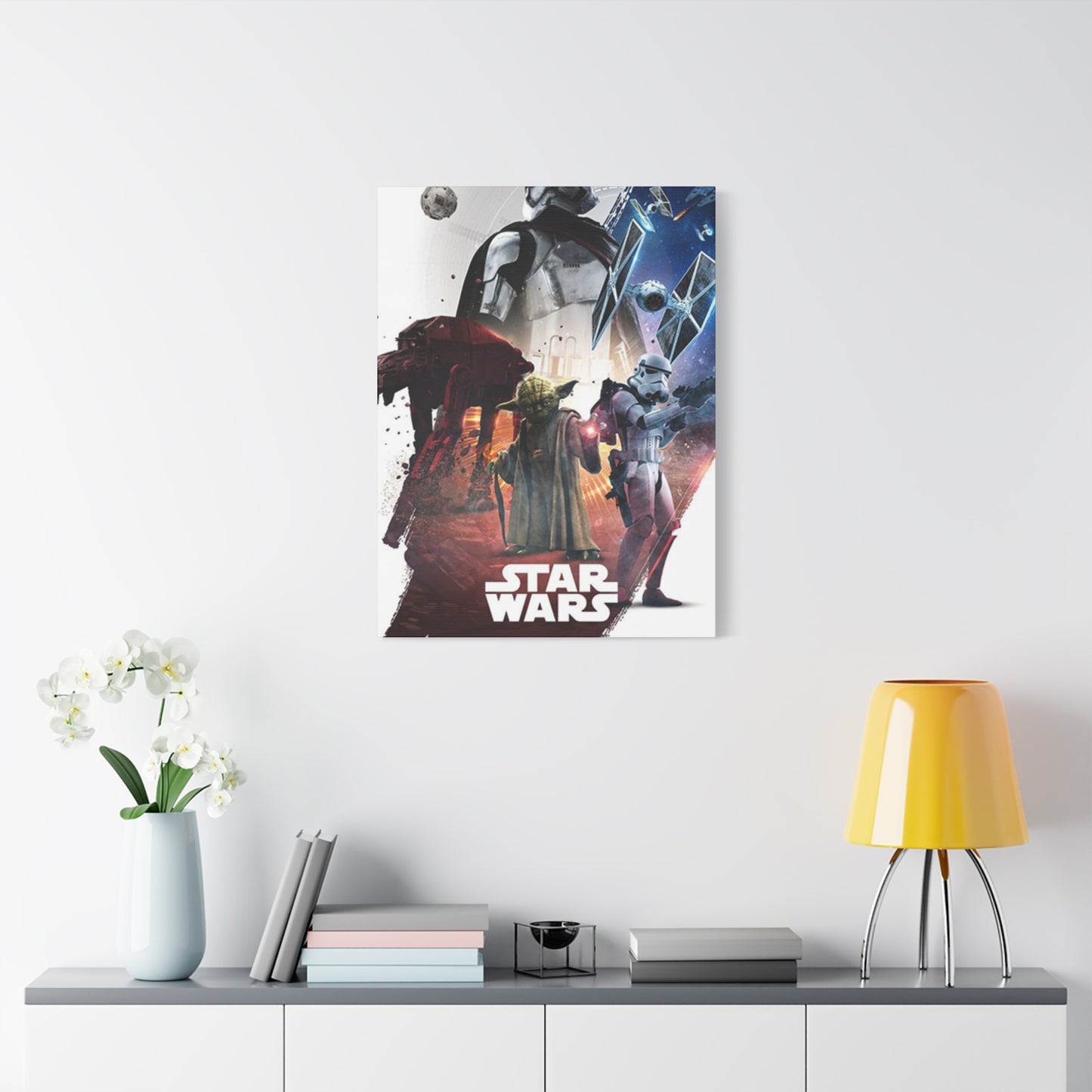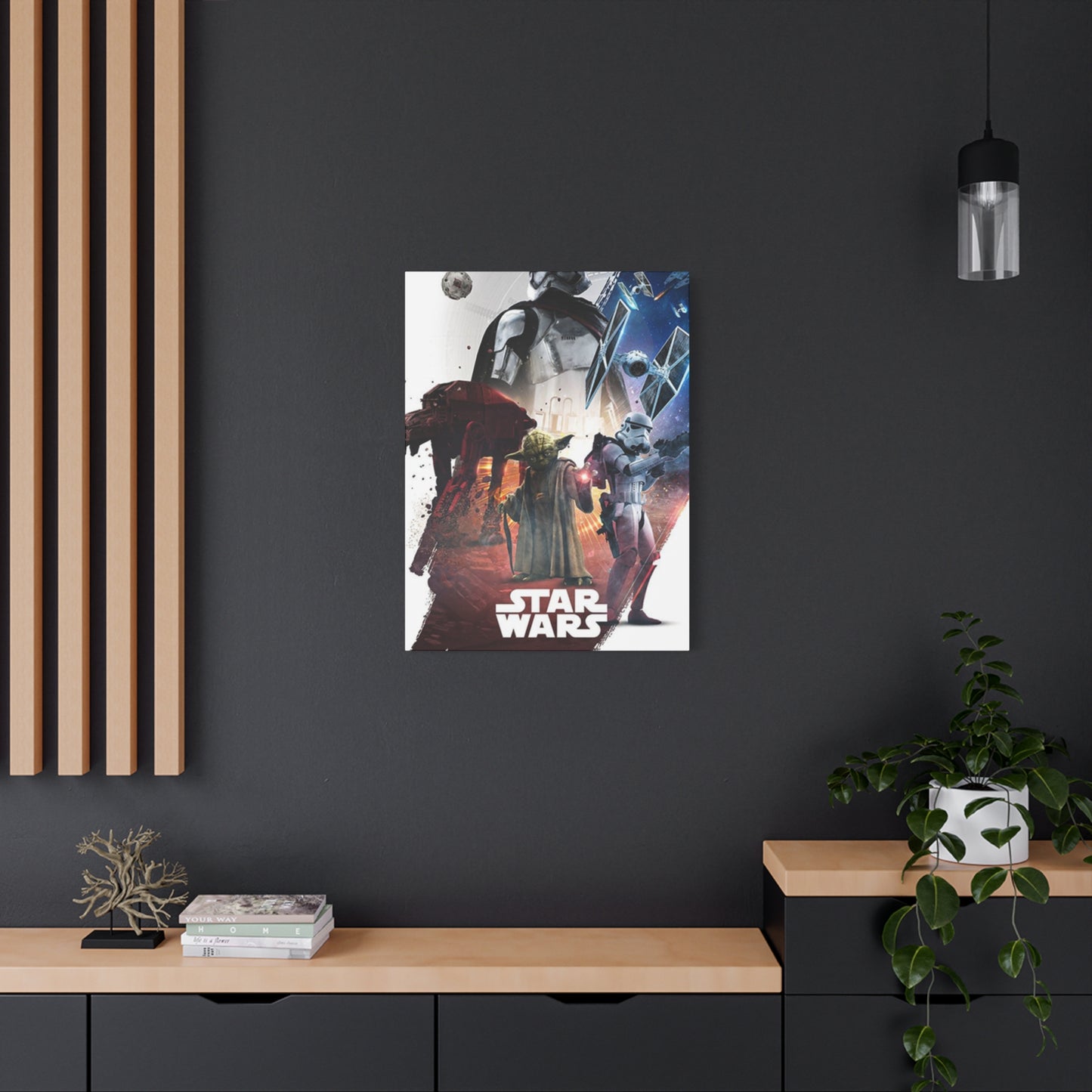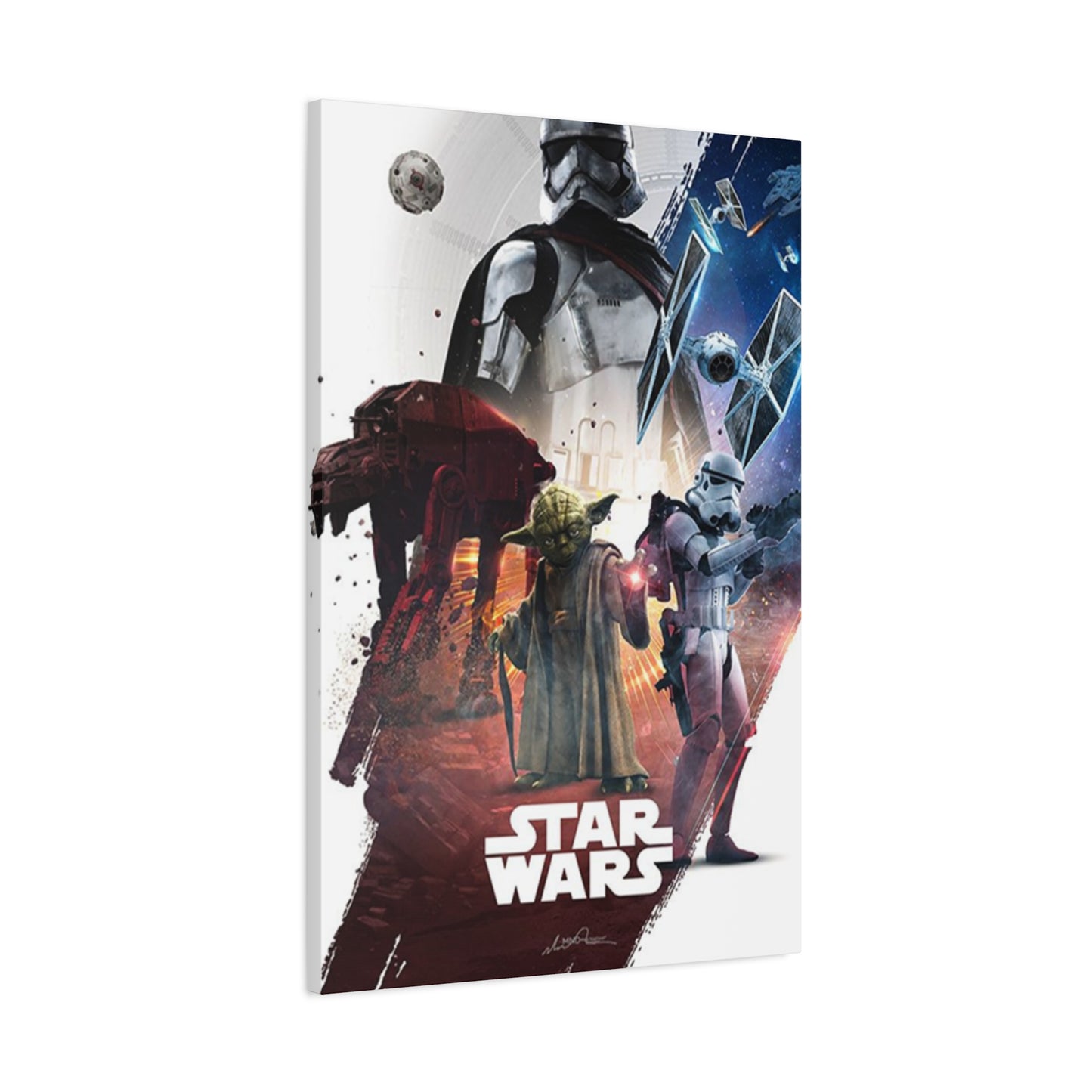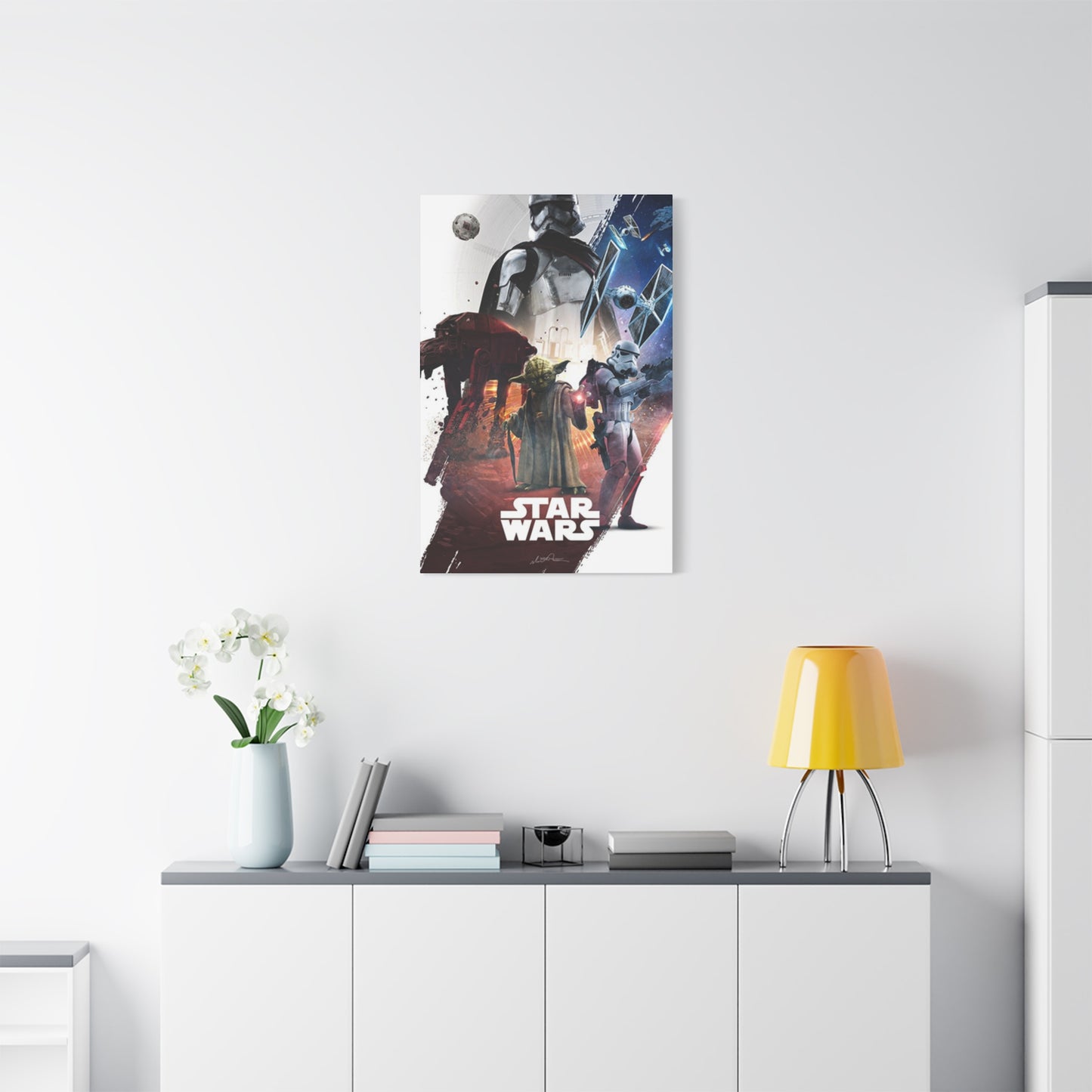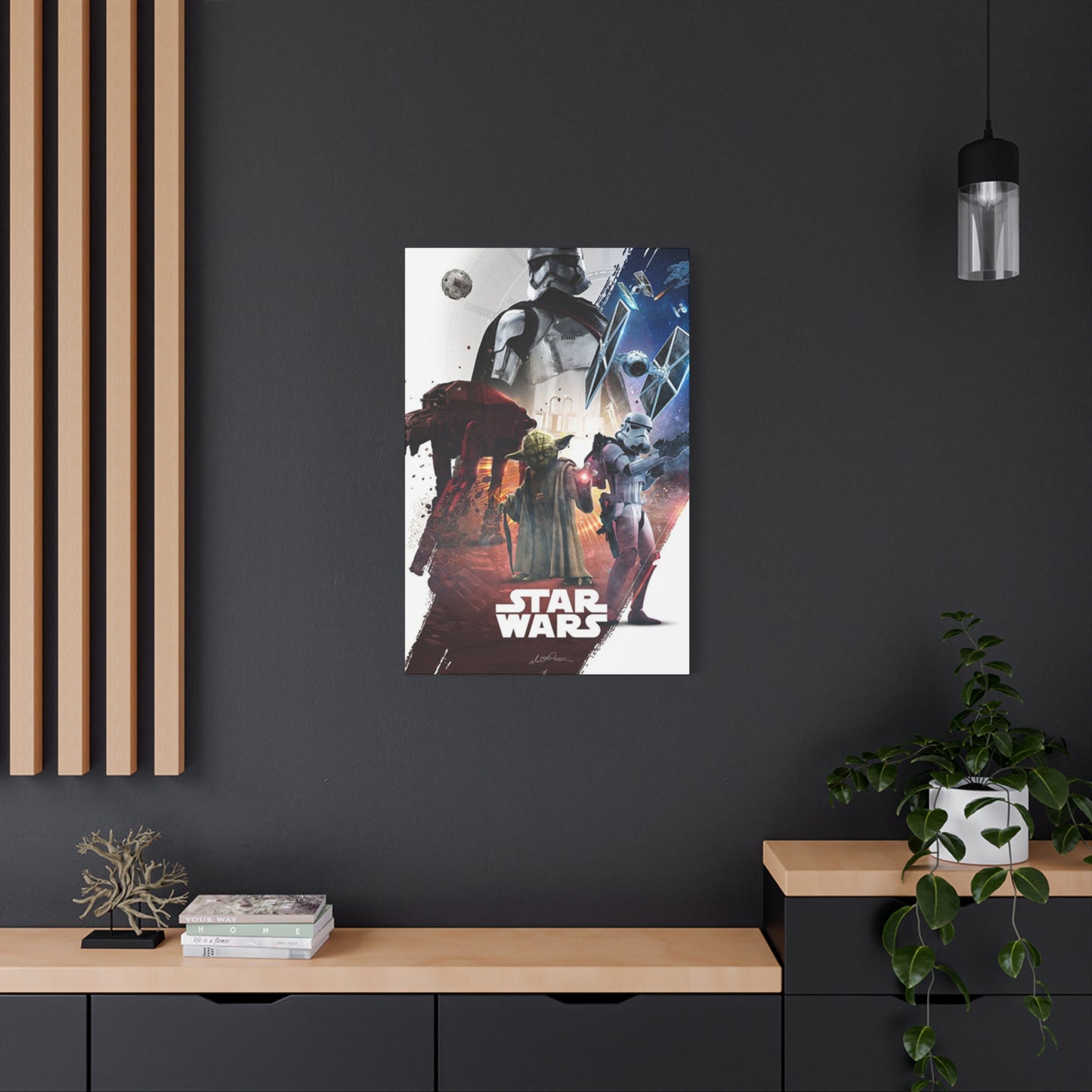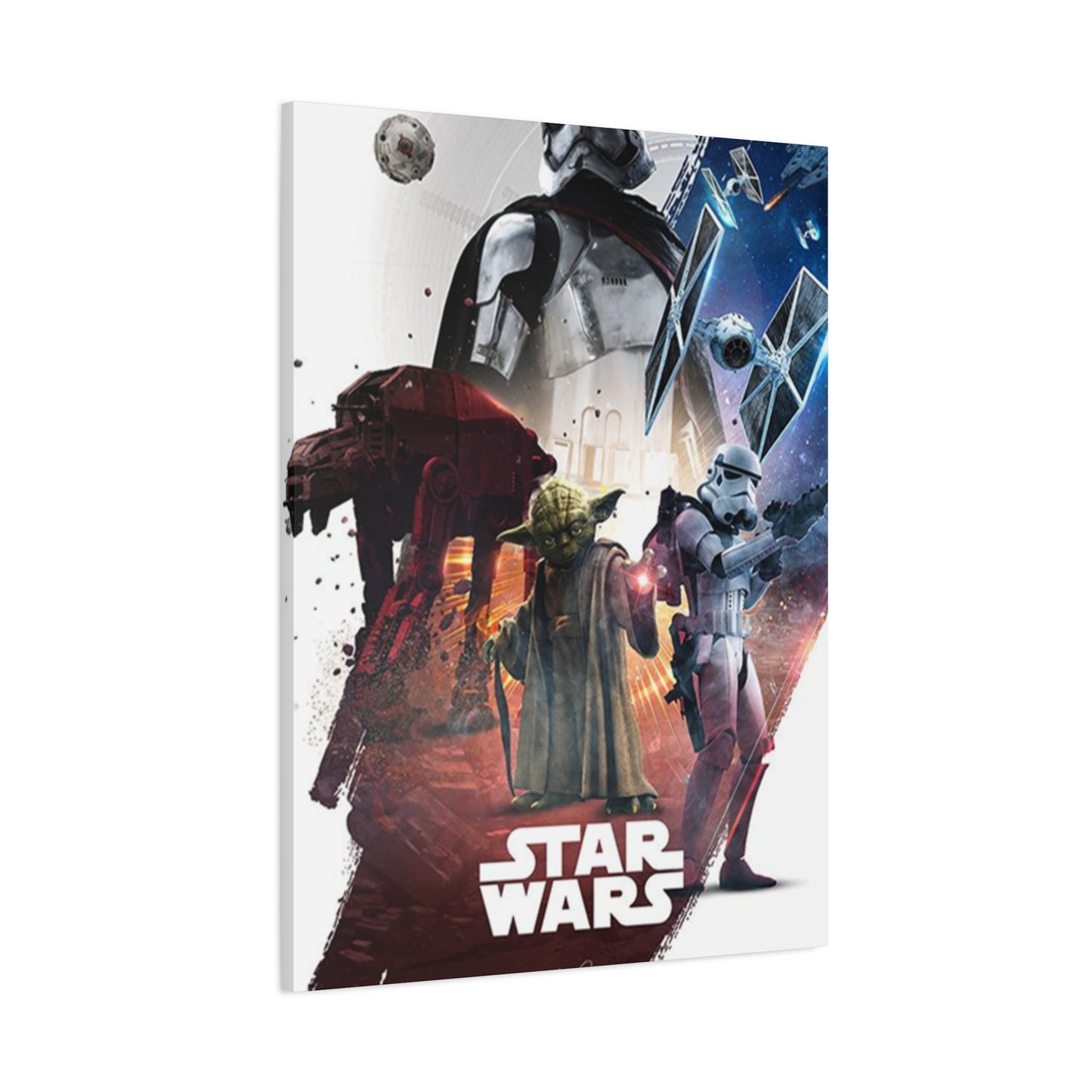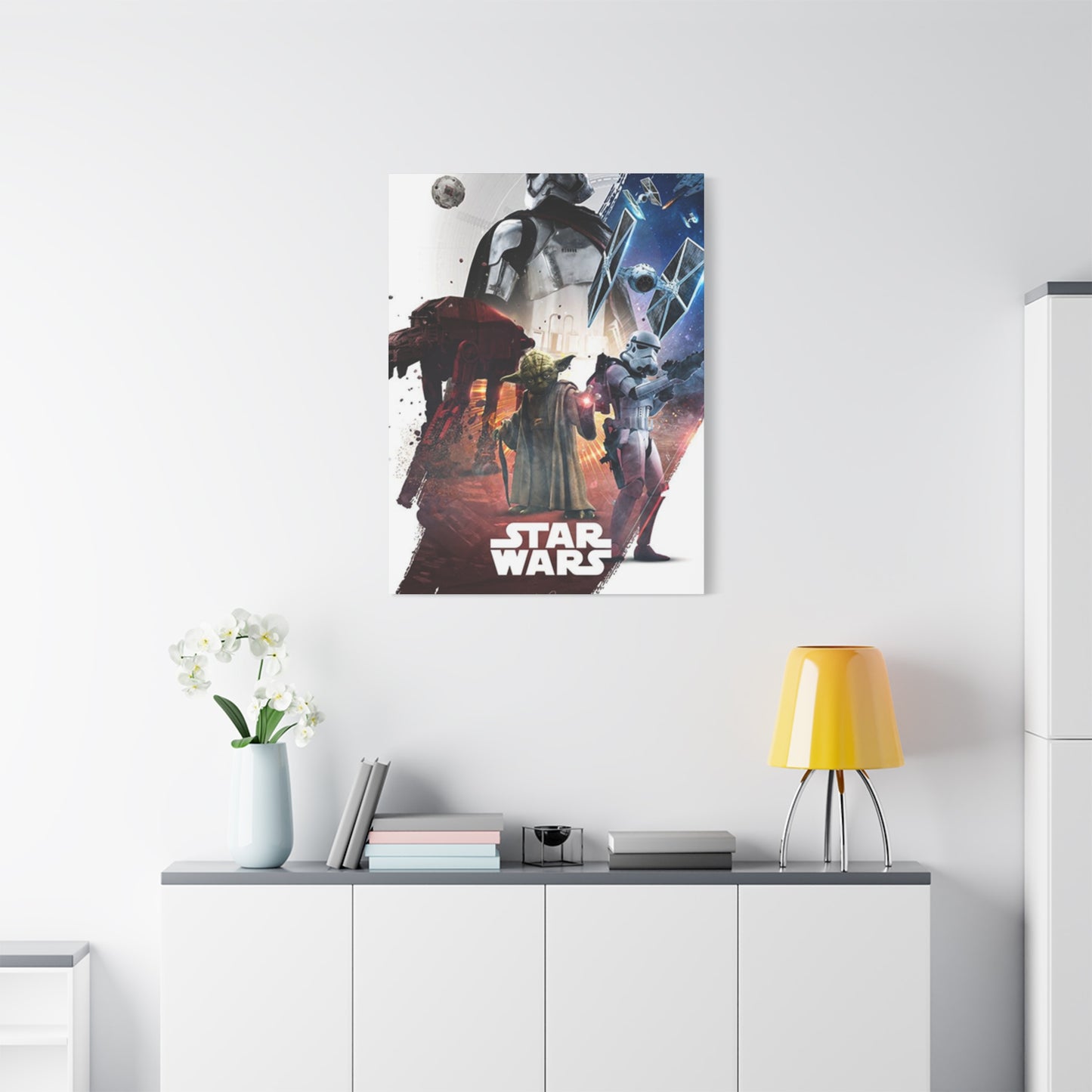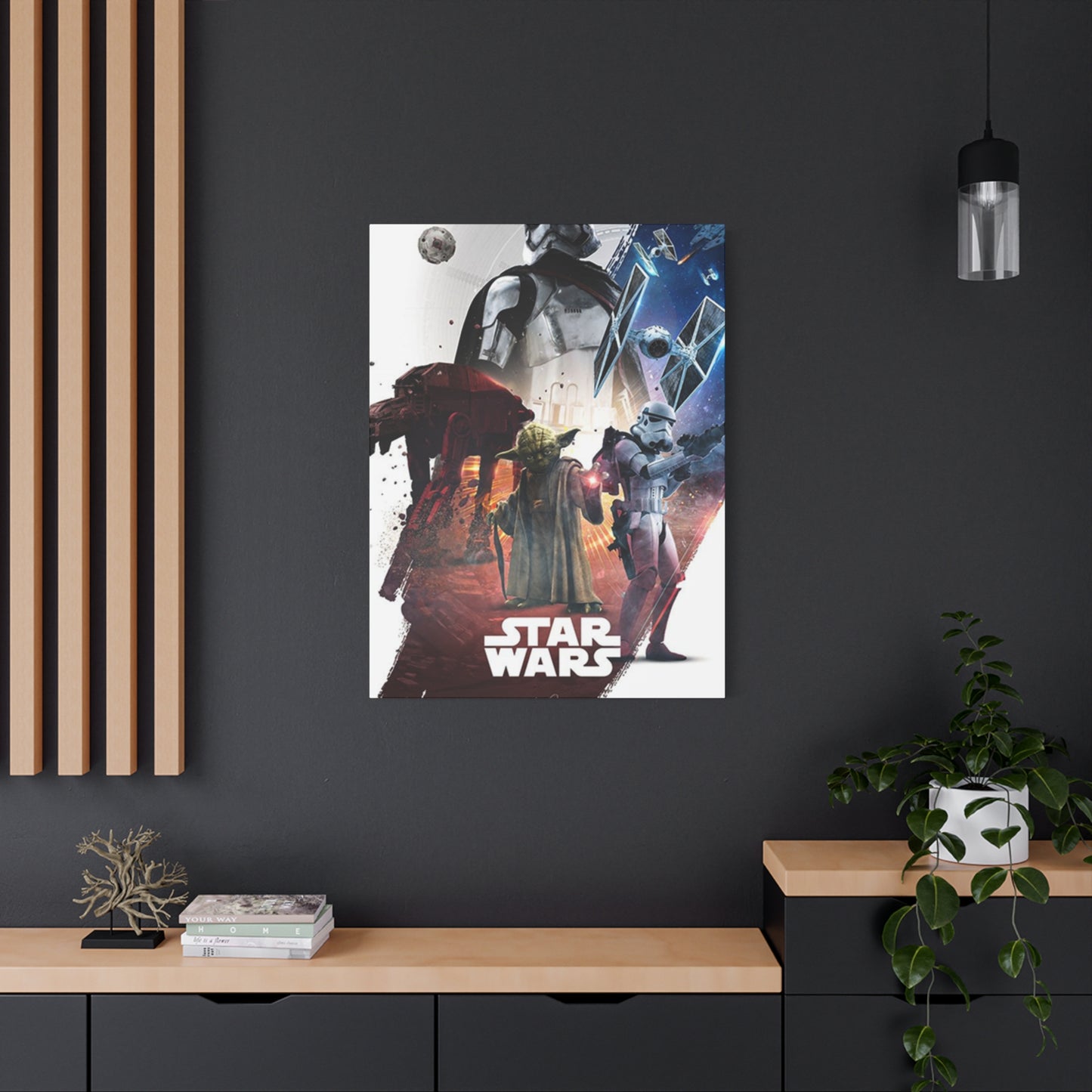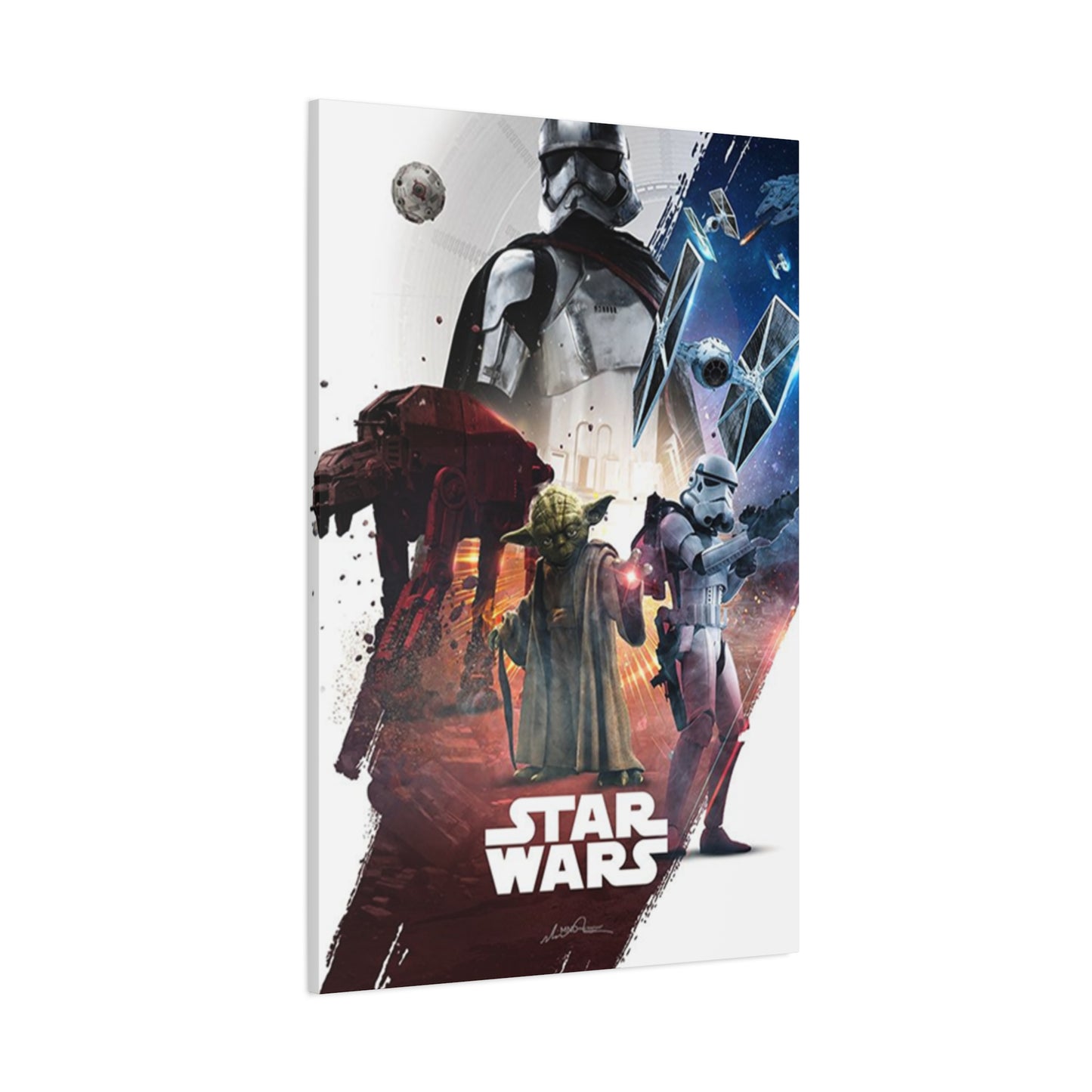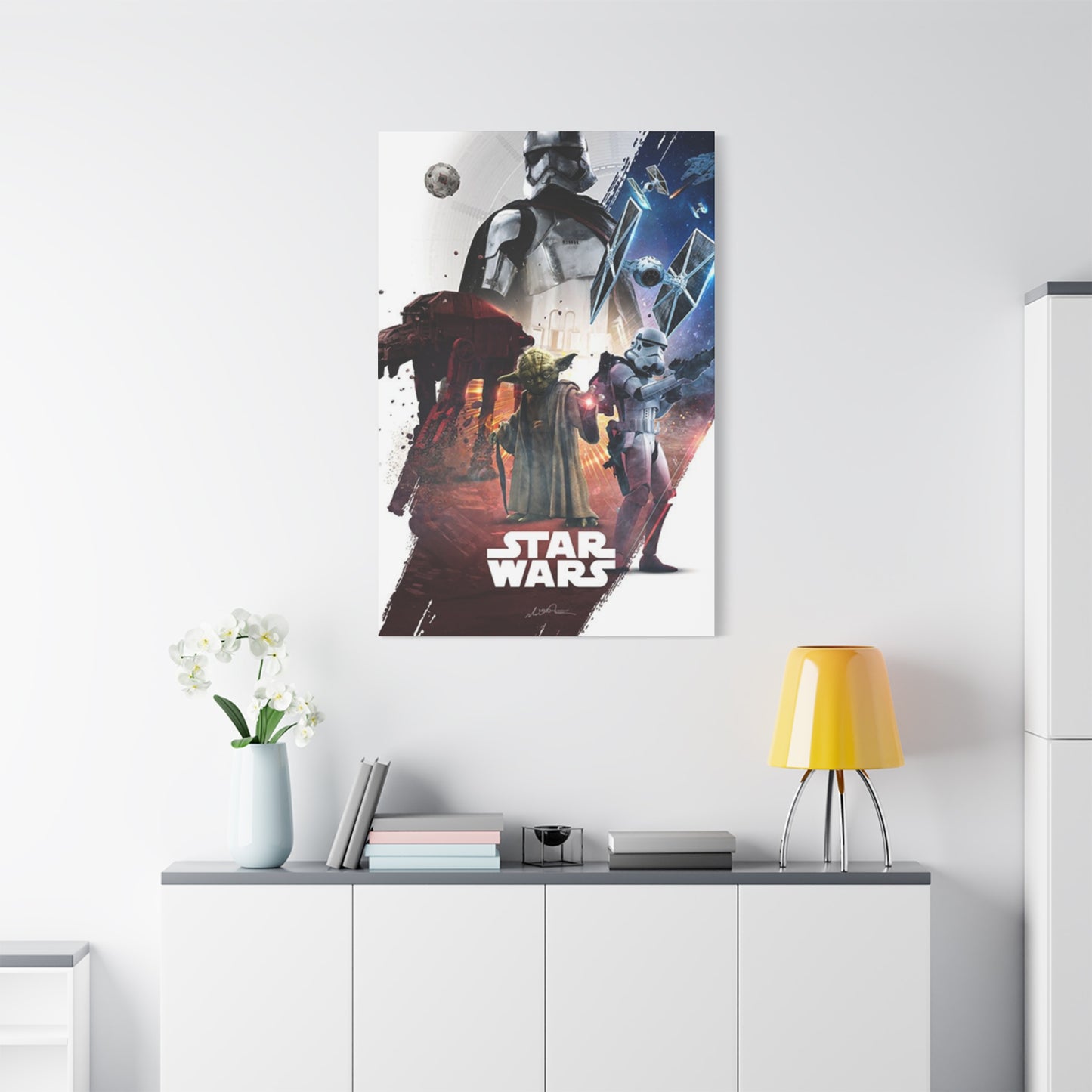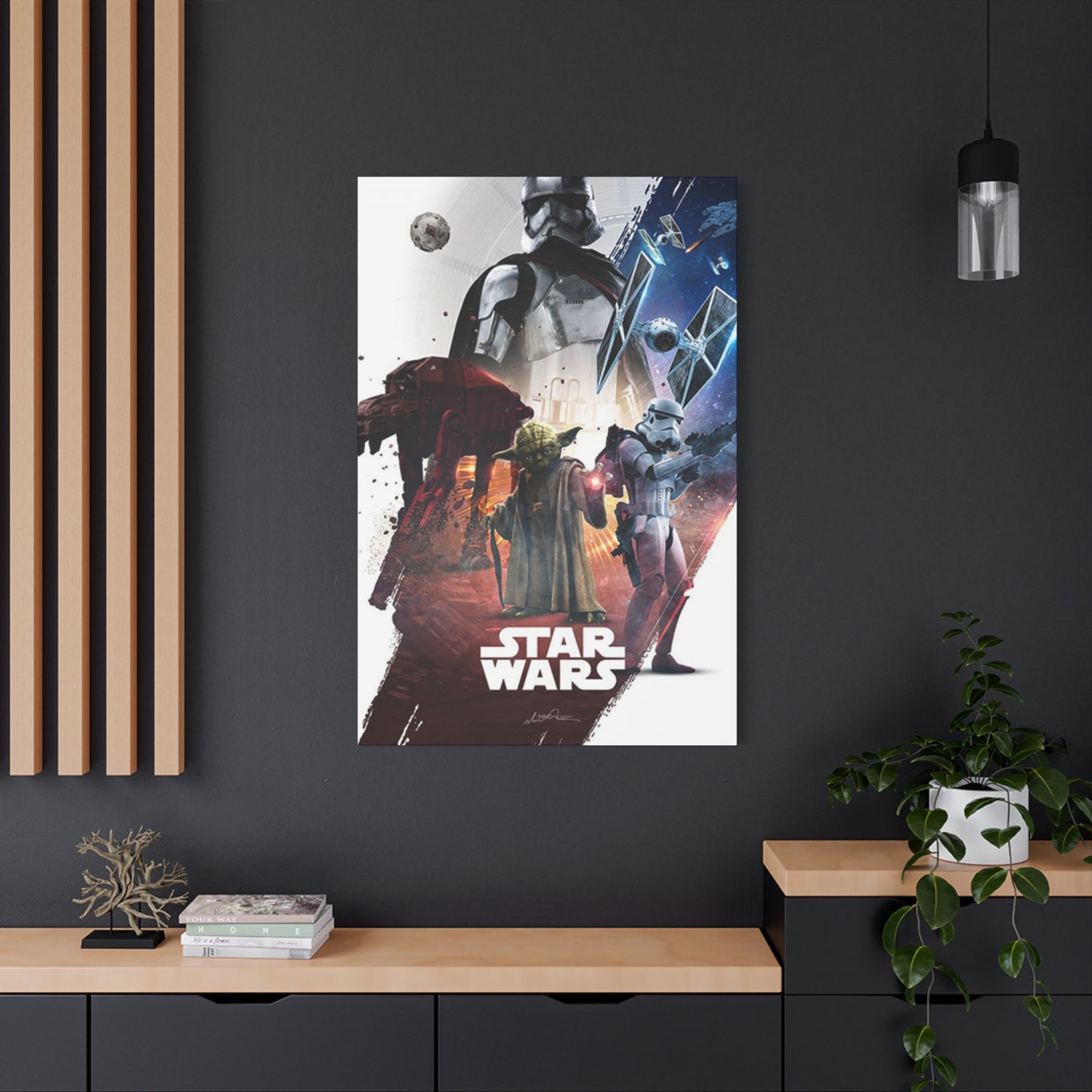Epic Galactic Cinema: Transforming Your Living Space with Star Wars Wall Art Collections
The phenomenon of space opera cinema has revolutionized interior design, bringing the majesty of distant galaxies directly into homes worldwide. Enthusiasts and decorators alike have discovered the transformative power of incorporating legendary science fiction imagery into their living environments, creating spaces that reflect passion, nostalgia, and artistic appreciation. This comprehensive exploration delves into the multifaceted world of decorative wall pieces inspired by the most influential space saga in cinematic history, offering insights into selection, placement, and the cultural significance of these artistic treasures.
The Star War Poster Wall Art
Decorative pieces showcasing the legendary space opera have become increasingly sophisticated over the decades, evolving from simple promotional materials into genuine artistic statements. These visual masterpieces capture defining moments from the beloved franchise, transforming ordinary walls into gateways to faraway galaxies. Collectors and casual fans alike appreciate how these pieces serve as conversation starters and nostalgic touchstones, connecting generations through shared cultural experiences.
The artistic merit of these decorative pieces extends far beyond simple fandom. Professional designers recognize their value in creating focal points within rooms, drawing the eye and establishing thematic coherence throughout living spaces. The imagery often features dramatic compositions with strong diagonals, compelling color palettes ranging from cool blues to fiery oranges, and dynamic action sequences that inject energy into any environment. Whether displayed in entertainment rooms, home theaters, or personal studies, these pieces command attention while maintaining sophisticated visual appeal.
Selection considerations include size proportions relative to wall space, color harmonization with existing decor elements, and the emotional resonance of specific scenes or characters. Many homeowners discover that carefully chosen pieces can bridge seemingly disparate design styles, incorporating vintage theatrical aesthetics into modern minimalist spaces or adding contemporary flair to traditional interiors. The versatility of these artistic works allows them to function equally well in bachelor apartments, family homes, and professional office environments.
Framing options significantly impact the overall presentation and longevership of these pieces. Museum-quality preservation techniques, including UV-protective glazing and acid-free matting, ensure that cherished imagery maintains vibrancy for decades. Frame selections range from sleek black aluminum for contemporary settings to ornate wooden profiles that complement classic interior styles. The interplay between artwork and frame creates a unified presentation that enhances rather than distracts from the central imagery.
Lighting considerations prove equally important in maximizing visual impact. Strategic placement of track lighting, picture lights, or even ambient illumination can dramatically enhance the viewing experience, creating depth and highlighting specific compositional elements. Some collectors incorporate adjustable lighting systems that allow them to modify the mood and emphasis throughout different times of day, transforming static displays into dynamic visual experiences.
The cultural significance of these decorative pieces reflects broader trends in how contemporary society values and displays popular culture artifacts. What previous generations might have dismissed as mere merchandising has evolved into legitimate collectible art, with rare vintage examples commanding substantial prices in specialized markets. This cultural shift acknowledges that meaningful art can emerge from commercial entertainment, validating the emotional connections millions of people have formed with these fictional universes.
Authenticity verification becomes crucial for serious collectors pursuing limited editions or vintage originals. Distinguishing genuine theatrical releases from modern reproductions requires knowledge of printing techniques, paper stocks, and distribution histories. Reputable dealers provide certificates of authenticity and detailed provenance documentation, ensuring buyers receive legitimate pieces rather than unauthorized reproductions.
Display arrangements benefit from thoughtful curation rather than haphazard accumulation. Creating cohesive gallery walls requires consideration of visual weight, color distribution, and narrative flow. Some enthusiasts organize pieces chronologically, tracking the saga's evolution, while others arrange them thematically, grouping characters, locations, or action sequences. Professional mounting hardware ensures secure installation while allowing for periodic rearrangement as collections evolve.
Star Wars Canvas Prints
Modern reproduction technology has revolutionized accessibility to high-quality imagery, allowing fans to incorporate spectacular visuals into their homes without requiring substantial financial investment. Canvas reproductions offer particular advantages, combining durability with aesthetic sophistication. The textured surface adds dimensional interest that flat paper cannot achieve, while the gallery-wrap mounting style eliminates the need for traditional framing, creating clean contemporary presentations.
Manufacturing processes for quality canvas pieces involve sophisticated digital printing technologies that capture extraordinary detail and color accuracy. Premium reproductions utilize archival-grade inks resistant to fading, ensuring images maintain their vibrancy despite years of display. The canvas material itself undergoes stretching over solid wooden frames, creating taut surfaces that resist warping or sagging over time. This construction method produces museum-quality results at consumer-friendly price points.
Size options span from modest accent pieces measuring twelve by sixteen inches to massive statement works exceeding six feet in their longest dimension. Larger formats create immersive viewing experiences, particularly when depicting expansive space battles or planetary vistas. The absence of reflective glass surfaces allows viewers to appreciate imagery from various angles without glare interference, making canvas pieces ideal for rooms with abundant natural lighting or multiple artificial light sources.
Subject matter selection for canvas reproductions encompasses the full breadth of the franchise, from classic theatrical imagery to modern interpretations by contemporary artists. Some pieces faithfully reproduce iconic promotional materials, while others offer fresh artistic perspectives on familiar characters and scenes. Abstract interpretations, minimalist designs, and hyper-realistic renderings provide options for diverse aesthetic preferences and interior design contexts.
Multi-panel arrangements, sometimes called triptychs or polyptychs, have gained popularity for their ability to create dramatic visual impact while maintaining manageable individual panel sizes. These segmented presentations work particularly well for panoramic battle sequences or landscape views, allowing the imagery to flow across wall surfaces with cinematic scope. Strategic spacing between panels creates rhythm and movement, guiding the viewer's eye through the composition.
Customization options enable fans to create truly personalized displays. Many suppliers offer color modification services, adjusting hues to complement specific room palettes. Some companies even create custom compositions, combining characters or scenes from different franchise entries into unified designs. These personalized approaches transform mass-market imagery into unique artistic statements reflecting individual tastes and preferences.
Galactic Battle Wall Decor
Explosive action sequences have defined the visual vocabulary of the franchise since its inception, and decorative pieces capturing these dynamic moments bring unparalleled energy to interior spaces. The kinetic composition of spacecraft engaged in combat, energy weapons creating brilliant light trails, and the chaos of interstellar warfare translates powerfully to wall displays. These pieces appeal particularly to enthusiasts who appreciate the technical aspects of science fiction, showcasing imaginative spacecraft designs and tactical scenarios.
Artistic interpretations of combat scenarios range from faithful reproductions of specific cinematic moments to speculative artwork depicting battles mentioned in expanded universe materials. Some pieces adopt documentary realism, presenting battles with gritty detail and tactical complexity. Others embrace more stylized approaches, using bold color contrasts and simplified forms to create graphic impact. This diversity ensures options exist for various design sensibilities and spatial contexts.
The psychological impact of action-oriented imagery deserves consideration when selecting pieces for specific rooms. High-energy battle scenes inject vitality and excitement into spaces, making them excellent choices for game rooms, exercise areas, or entertainment spaces. However, their intense visual character may prove overwhelming in bedrooms or meditation spaces where calming atmospheres prove more appropriate. Strategic placement ensures imagery complements rather than contradicts the intended use of each space.
Technical illustration quality varies significantly across available options. Superior pieces demonstrate accurate spacecraft proportions, consistent lighting physics, and plausible spatial relationships between elements. Attention to details like engine glow effects, weapon discharge characteristics, and damage modeling distinguishes exceptional work from generic reproductions. Enthusiasts with technical backgrounds often appreciate pieces that respect the established design language and internal logic of the franchise.
Color palette analysis reveals interesting patterns in battle imagery. Cool blues and purples typically represent protagonist forces, while warm oranges and reds denote antagonistic elements. This color coding allows viewers to instantly comprehend complex spatial relationships and tactical situations. Exceptional artistic compositions balance these opposing color temperatures, creating visual tension that mirrors narrative conflict while maintaining aesthetic harmony.
Scale representation presents unique challenges and opportunities in battle-themed artwork. Some pieces adopt close perspectives, focusing on individual spacecraft and immediate combat details. Others pull back to encompass entire fleets and planetary backdrops, emphasizing the scope and scale of galactic warfare. Both approaches offer distinct advantages, with close perspectives providing intimacy and technical detail while distant views convey epic grandeur.
Classic Star Wars Poster Art
The original theatrical releases revolutionized movie marketing and established visual templates that influenced decades of subsequent promotional design. Vintage promotional materials from these releases have achieved iconic status, recognized globally even by individuals with minimal franchise familiarity. These pieces capture a specific moment in cultural history when practical effects, traditional illustration techniques, and bold graphic design converged to create unforgettable imagery.
Artistic styles employed in classic promotional materials reflect the design aesthetics of their respective eras. Early pieces featured painted artwork by legendary illustrators, with dramatic compositions emphasizing character dynamics and epic scope. The artistic approach combined realism with heightened theatricality, creating images that functioned as miniature movie experiences. These hand-crafted qualities distinguish vintage pieces from modern digital designs, imbuing them with warmth and human artistic presence.
Collectibility of authentic vintage pieces has escalated dramatically as original releases recede further into history. Genuine theatrical one-sheets, particularly those in excellent condition with minimal restoration, command premium prices among serious collectors. Authentication becomes crucial in this market segment, with expert evaluators examining paper stock, printing characteristics, and distribution markings to verify legitimacy. The thrill of acquiring authentic vintage pieces combines historical preservation with aesthetic appreciation.
Reproduction quality for classic designs varies enormously across suppliers. Superior reproductions employ period-appropriate printing techniques and paper stocks, capturing the look and feel of originals while maintaining affordability. Budget reproductions often sacrifice color accuracy and detail resolution, producing muddy images that pale compared to quality versions. Discerning collectors invest in premium reproductions that honor the artistic integrity of source materials.
Size standardization in vintage theatrical materials followed industry conventions, with one-sheets measuring approximately twenty-seven by forty-one inches. These proportions create commanding vertical presentations well-suited to many residential spaces. Alternative formats including lobby cards, half-sheets, and inserts offered different proportions for varied display contexts. Modern collectors often combine multiple formats to create comprehensive displays showcasing the full range of vintage promotional materials.
Space Saga Wall Art
The narrative scope of the franchise encompasses generations of characters across multiple planetary systems, creating rich material for artistic interpretation. Decorative pieces exploring this expansive mythology range from character-focused portraits to sweeping vistas depicting alien worlds. This thematic breadth ensures enthusiasts can find imagery resonating with their specific connections to the franchise, whether those bonds formed through character identification, world-building appreciation, or philosophical themes.
Planetary landscapes featured throughout the saga offer spectacular subjects for visual artwork. Desert worlds with twin suns casting dramatic shadows, frozen wastelands swept by howling winds, lush forest moons teeming with life, and volcanic planets glowing with molten fury all provide distinctive aesthetic experiences. Artwork featuring these environments brings exotic beauty into living spaces while prompting contemplation about the diversity of potential worlds throughout the universe.
Character-focused pieces allow fans to celebrate beloved heroes, complex antiheroes, and memorable antagonists. Portrait-style artwork emphasizes personality and emotional depth, capturing decisive moments that define character arcs. Group compositions explore relationships and dynamics between characters, visualizing the connections that drive narrative progression. From wise mentors to scrappy rebels, the franchise's rich character tapestry offers endless inspiration for artistic interpretation.
Symbolic and abstract interpretations provide alternatives to literal representations, appealing to collectors preferring sophisticated artistic approaches. Minimalist designs distill characters or concepts to essential forms, creating elegant statements compatible with refined interior aesthetics. Abstract pieces explore themes like duality, destiny, and redemption through color relationships and compositional strategies rather than representational imagery. These approaches allow franchise enthusiasm to integrate seamlessly into upscale residential or professional environments.
Chronological breadth spanning decades of storytelling means artwork can focus on various narrative eras. Some collectors concentrate exclusively on original trilogy material, valuing the historical significance and nostalgic resonance of these foundational stories. Others embrace the entire chronological span, creating displays that track the saga's evolution across multiple generations. Curating collections around specific eras allows enthusiasts to explore particular themes or aesthetic periods in depth.
Emotional resonance proves crucial when selecting pieces for personal spaces. Imagery evoking specific memories, favorite scenes, or meaningful themes creates deeper connections than generic franchise representation. A piece depicting a character's triumphant moment might inspire daily motivation, while artwork showing contemplative scenes could encourage reflection and mindfulness. Choosing pieces that genuinely resonate personally ensures lasting satisfaction with decorative selections.
Mixed media presentations incorporating multiple artistic approaches create visually dynamic displays. Combining illustrated pieces with photographic stills, abstract interpretations with literal representations, and vintage designs with contemporary artwork produces engaging variety while maintaining thematic coherence. This curatorial approach mirrors the franchise itself, which blends diverse influences and storytelling approaches into unified narratives.
Seasonal or thematic rotation allows collectors with extensive holdings to refresh their environments periodically. Storing pieces carefully and swapping displays every few months prevents visual fatigue while giving each piece its moment of appreciation. This practice also protects artwork from prolonged exposure to potentially damaging environmental conditions, extending longevity across entire collections.
Starfighter Canvas Prints
The imaginative spacecraft designs that populate the franchise have captivated audiences for generations, representing triumphs of industrial design merged with futuristic imagination. Artwork showcasing these vessels appeals to enthusiasts appreciating technical aesthetics and engineering beauty. From nimble fighters to massive capital ships, each craft possesses distinctive visual character reflecting its operational role and factional allegiance.
Technical illustration approaches emphasize mechanical details and functional design elements, appealing to viewers with engineering or technical backgrounds. These pieces often depict craft from advantageous angles highlighting propulsion systems, weapon placements, and structural features. Blueprint-style presentations adopt schematic approaches, showing craft from multiple perspectives with callouts identifying specific systems. Such technical artwork satisfies intellectual curiosity while providing aesthetic appeal.
Action-oriented presentations show craft engaged in their designed purposes, creating dynamic visual excitement. Banking fighters streaming across starfields, capital ships unleashing devastating broadsides, and vessels navigating treacherous environments all generate kinetic energy that enlivens display spaces. These pieces capture the romance of spaceflight and combat, appealing to the adventurous spirit that draws many people to science fiction.
Comparative scale illustrations reveal the enormous size differentials between various craft classes. Pieces showing tiny fighters adjacent to massive destroyers emphasize the audacious courage required of pilots engaging vastly larger opponents. These scale comparisons also showcase the thoughtful design hierarchies underlying the franchise's visual language, where form follows function across diverse operational requirements.
Factional design philosophies become apparent when examining craft from opposing sides. Certain factions favor angular, aggressive designs emphasizing raw power and intimidation. Others employ curved, organic forms suggesting harmony with natural principles. These aesthetic distinctions reinforce narrative themes while creating visually distinct identities. Collectors often gravitate toward designs reflecting their preferred factions or aesthetic sensibilities.
Historical development of spacecraft design throughout the franchise reflects both in-universe technological progression and real-world design evolution. Early craft possessed analog charm with visible panels, greebling details, and weathered surfaces suggesting hard use. Later additions incorporated sleeker profiles and more refined details, mirroring advances in visual effects capabilities. Tracking this design evolution through curated collections provides fascinating insights into creative development processes.
Jedi vs Sith Wall Decor
The eternal conflict between opposing philosophical orders provides dramatic material for powerful visual artwork. These pieces explore themes of light versus darkness, control versus freedom, and destiny versus choice through dynamic confrontations. The iconic energy blade duels that punctuate this conflict create spectacular visual opportunities, with brilliant light trails cutting through shadowy environments and opponents locked in decisive combat.
Symbolic representation of this philosophical divide extends beyond literal duel depictions. Some pieces adopt metaphorical approaches, using color contrasts, compositional balance, and abstract forms to explore duality concepts. These sophisticated interpretations allow thematic engagement without requiring explicit franchise imagery, enabling integration into refined design contexts where literal representations might prove inappropriate.
Character-focused pieces examine specific confrontations that defined narrative turning points. Legendary duels between masters and apprentices, friends turned enemies, and generations-spanning grudges all provide emotionally charged subject matter. These pieces capture not just physical combat but the psychological and emotional stakes underlying conflicts, adding narrative depth to visual spectacle.
Environmental contexts for these confrontations range from industrial catwalks to throne rooms to planetary surface locations. Each setting contributes unique atmospheric qualities affecting overall artistic impact. Industrial environments add gritty realism and claustrophobic tension, while planetary settings incorporate natural grandeur. The interplay between combatants and environments creates compositional complexity that rewards sustained viewing.
Lighting dynamics prove crucial in duel-themed artwork, with energy blade illumination providing primary light sources in many compositions. The characteristic glow casts dramatic highlights and shadows, creating theatrical chiaroscuro effects that emphasize drama and movement. Skilled artists leverage these lighting opportunities to create depth, direct attention, and establish mood. The interplay of colored lights from opposing blades generates visual tension mirroring narrative conflict.
Philosophical themes embedded within this conflict resonate beyond simple good versus evil dichotomies. The franchise explores how noble intentions can lead to corruption, how redemption remains possible even after grievous wrongs, and how power itself proves neutral until directed by user philosophy. Artwork engaging these deeper themes offers intellectual substance alongside visual appeal, prompting contemplation about ethics, power, and human nature.
Compositional dynamics in duel imagery typically emphasize movement and tension. Diagonal blade orientations create unstable, action-oriented compositions. Overlapping figures generate spatial complexity and suggest intense close-quarters combat. Strategic negative space allows compositions to breathe while isolating crucial action moments. These compositional strategies transform static images into implied narratives, suggesting the moments before and after captured instants.
Collecting pieces across different combat encounters allows enthusiasts to explore how various artists interpret similar subject matter. Stylistic variations from photorealistic to highly stylized, color palettes from naturalistic to expressionistic, and compositional approaches from chaotic to geometrically structured all provide fresh perspectives on familiar scenarios. This diversity prevents thematic repetition while maintaining focus on central conflicts.
The Force Awakens Wall Art
The franchise revival introduced new characters, updated visual aesthetics, and fresh narrative directions while honoring legacy elements. Artwork from this era reflects these dual imperatives, combining familiar design languages with contemporary sensibilities. The result bridges generational divides, appealing to long-time enthusiasts while welcoming newcomers with accessible entry points.
Visual aesthetics in this era adopted grittier, more grounded approaches compared to some previous entries. Practical effects received renewed emphasis, creating tangible physicality in spacecraft, environments, and creature designs. This aesthetic shift translated into artwork emphasizing texture, weathering, and realistic lighting rather than stylized or idealized presentations. The result feels simultaneously fresh and connected to franchise roots.
New character introductions provided opportunities for artists to establish visual identities unconstrained by decades of accumulated depictions. Fresh faces allowed creative freedom in poses, expressions, and styling choices. Early artwork for these characters helped define how audiences would perceive them, contributing to character establishment alongside cinematic presentations. Collecting pieces from this formative period captures a unique moment in franchise evolution.
Legacy character returns generated powerful nostalgic responses, and artwork featuring aged heroes provided poignant commentaries on time's passage. These pieces explore themes of aging, legacy, and passing torches to new generations. The visual contrast between youthful energy of new characters and weathered wisdom of veterans creates compelling compositional opportunities that artists have enthusiastically explored.
Environmental design in this era combined familiar aesthetic elements with distinctive new locations. Desert landscapes echoed earlier planetary environments while introducing unique features. Forested areas and industrial facilities likewise balanced familiarity with novelty. Artwork showcasing these environments allows enthusiasts to appreciate production design details that might pass quickly onscreen, revealing the thought and creativity underlying every visual element.
Action sequences featuring updated effects technology created spectacular visual opportunities for artistic interpretation. Aerial dogfights with enhanced kinetic intensity, ground battles with greater scope and complexity, and personal confrontations with visceral immediacy all translated effectively into static artwork. Artists captured defining action moments, preserving spectacular sequences for sustained appreciation.
Iconic Star Wars Movie Poster Art
Certain promotional designs transcend their commercial origins to achieve universal recognition and lasting cultural impact. These iconic images have been reproduced countless times across diverse contexts, referenced in other media, and parodied for comedic effect. Their visual power derives from masterful composition, striking color use, and ability to communicate narrative essence through single images.
The most recognizable designs typically feature bold central figures against dramatic backgrounds, establishing clear focal points while suggesting broader narrative scope. Character positioning communicates relationships and power dynamics, allowing viewers to intuitively grasp story fundamentals. Background elements provide context without overwhelming central subjects, demonstrating sophisticated visual hierarchy management.
Color orchestration in iconic designs employs limited palettes for maximum impact. Strategic color placement directs attention, creates depth, and evokes emotional responses. Warm colors advance visually while cool colors recede, allowing artists to create dimensional effects on flat surfaces. Complementary color relationships generate visual vibration that captures and holds attention. These color strategies work subconsciously, shaping viewer responses before conscious analysis begins.
Typography integration presents unique challenges in poster design, requiring text elements to coexist harmoniously with imagery while maintaining legibility. The most successful designs achieve seamless integration where typography enhances rather than competes with visual elements. Font selections, sizing decisions, and placement strategies all contribute to overall effectiveness. Studying these typographic choices provides valuable lessons in visual communication beyond franchise-specific contexts.
Cultural staying power of these iconic designs reflects their ability to communicate across language and cultural barriers. Visual storytelling transcends verbal description, making these images accessible to global audiences. This universal communication partly explains the franchise's worldwide success and these designs' enduring recognition. Displaying such culturally significant imagery connects homeowners to shared global experiences.
Modern reinterpretations of classic iconic designs allow contemporary artists to engage with influential works while contributing fresh perspectives. These reinterpretations might alter color palettes, adjust compositions, or incorporate stylistic approaches from other artistic movements. The dialogue between original and reinterpretation enriches both, demonstrating how great designs inspire ongoing creative engagement.
Limited edition releases of iconic designs, particularly those authorized through official channels and featuring enhancements like foil stamping or embossing, appeal to collectors seeking premium versions of beloved imagery. These special editions acknowledge the artistic significance of designs while creating collectible variants that may appreciate in value. Authentication and condition documentation prove essential when pursuing such collectibles.
Educational value exists in analyzing what makes certain designs iconic while others fade into obscurity. This analysis involves examining compositional strategies, color theory applications, and visual communication principles. Such study benefits anyone interested in design, marketing, or visual arts, demonstrating practical applications of theoretical concepts through successful real-world examples.
Galactic Empire Canvas Art
The imposing military might and authoritarian order of the antagonistic faction provide striking visual material emphasizing power, control, and industrial might. Artwork exploring this thematic territory often adopts darker palettes, geometric precision, and overwhelming scale to communicate the faction's character. These pieces appeal to enthusiasts appreciating the darker aesthetic possibilities within the franchise while acknowledging the compelling visual design of antagonistic forces.
Architectural elements associated with this faction emphasize brutalist design principles, with massive geometric forms expressing power through sheer scale and austere surfaces. Artwork featuring these structures creates dramatic visual impact through simplified forms and monolithic presence. The psychological effect communicates authority and dehumanizing bureaucracy, reinforcing thematic concerns about totalitarianism and individual insignificance within oppressive systems.
Military hardware designs embrace angular, aggressive aesthetics that contrast sharply with the more organic forms favored by opposing factions. Triangular profiles, sharp edges, and monochromatic color schemes create visually threatening appearances that reinforce factional characterization. Artwork showcasing these designs appeals to viewers appreciating bold, uncompromising aesthetics and the strange beauty found in military hardware.
Symbolic representations associated with this faction have become among the most recognizable iconography in popular culture. Geometric designs and distinctive emblems appear across uniforms, equipment, and architecture, creating consistent visual identity. Artwork featuring these symbolic elements makes powerful graphic statements, though their use requires sensitivity to how such imagery might be interpreted given its fictional association with authoritarian oppression.
Personnel depicted in faction-themed artwork typically appear as faceless masses, emphasizing conformity and dehumanization rather than individuality. This visual approach reinforces thematic criticisms of authoritarian systems that subjugate individual identity to collective imperatives. The sea of identical figures creates patterns and rhythms that provide abstract beauty while delivering uncomfortable commentary about totalitarian societies.
Leadership figures within this faction offer different artistic opportunities, focusing on individual personalities wielding terrible power. These portraits explore how power corrupts, how fear motivates, and how charisma masks malevolence. The psychological complexity of these characterizations provides rich material for artistic interpretation beyond simple villainy, examining the human capacity for evil when combined with authority and ideology.
Vintage Star Wars Wall Prints
Original promotional materials and early merchandising artwork possess unique historical value and aesthetic qualities that distinguish them from modern reproductions. The analog production methods, period-appropriate color palettes, and hand-crafted artistic approaches create visual characteristics impossible to replicate exactly through contemporary digital processes. These vintage qualities appeal to collectors valuing historical authenticity and the particular aesthetic warmth of pre-digital artwork.
Paper quality and printing techniques from earlier decades produced distinctive visual characteristics. Offset lithography created subtle variations and textures absent from digital printing. Color registration imperfections sometimes occurred, creating minor misalignments that paradoxically add charm and character. Paper stocks with higher fiber content aged differently than modern alternatives, developing patinas that collectors appreciate as evidence of authentic age.
Distribution histories for vintage materials add fascinating context to pieces. Understanding whether specific designs appeared as theatrical displays, retail promotions, or mail-order exclusives provides historical perspective. Some materials had limited distribution in specific regions, creating scarcity that drives collector interest. Researching these distribution patterns helps collectors understand rarity and authenticity while deepening appreciation for how franchise marketing evolved.
Condition assessment proves crucial when evaluating vintage materials. Grading systems account for factors like edge wear, surface marks, color fading, and structural integrity. Pristine examples command premium prices, though some collectors prefer pieces showing honest wear as evidence of authentic age and use. Professional restoration can improve condition but may affect collector value depending on execution quality and disclosure practices.
Storage and display considerations intensify with genuinely vintage pieces due to fragility and susceptibility to environmental damage. Archival framing using acid-free materials, UV-protective glazing, and proper mounting techniques protects investments while allowing enjoyment. Climate control preventing humidity fluctuations and temperature extremes further preserves vulnerable paper-based materials. These preservation measures require investment but prove essential for maintaining long-term value.
Market dynamics for vintage materials fluctuate based on collector demand, available supply, and broader economic conditions. Certain pieces periodically spike in value when particular characters or story elements gain renewed attention through new franchise entries. Tracking market trends helps collectors make informed acquisition decisions, though most enthusiasts prioritize personal enjoyment over financial speculation.
Reproduction distinctions become critical when vintage aesthetics appeal but authentic age matters less than visual character. High-quality reproductions using period-appropriate techniques and materials can capture vintage looks while maintaining affordability and better physical condition. These reproductions serve decorative purposes admirably while preserving budgets for other collecting priorities or reserving resources for genuinely rare acquisitions.
Intergalactic Adventure Art
The spirit of exploration, discovery, and adventure permeates the franchise, inspiring artwork that captures excitement and wonder. These pieces emphasize journey over destination, possibility over certainty, and the exhilaration of venturing into unknown territories. Such imagery appeals to the adventurous spirit within viewers, inspiring contemplation about exploration, courage, and the allure of undiscovered frontiers.
Spacecraft depicted as vessels of exploration rather than instruments of war adopt different visual characteristics. Sleeker profiles suggesting speed and maneuverability, sensor arrays for scientific investigation, and less aggressive design languages communicate purposes beyond combat. Artwork featuring exploration craft celebrates technological achievement and human curiosity rather than martial prowess, offering alternatives to combat-focused imagery.
Planetary discovery scenes showcase alien environments in their full exotic glory, emphasizing biodiversity, geological wonders, and atmospheric phenomena impossible on familiar worlds. These pieces spark imagination about the universe's infinite variety, encouraging viewers to contemplate possibilities beyond current knowledge. The sense of wonder these images inspire connects to fundamental human drives toward exploration and discovery that have propelled species development.
Character-focused adventure artwork typically shows protagonists in moments of determination, triumph, or wonder rather than conflict. Heroes facing challenges with courage, discovering hidden truths, or experiencing awe at encountering the extraordinary all provide inspirational subject matter. These positive, forward-looking images offer uplifting alternatives to darker or more conflict-oriented options, creating spaces encouraging optimism and aspiration.
Journey narratives depicted through sequential imagery or suggested through compositional strategies allow single pieces to communicate story arcs. Foreground elements suggesting origins, middle-ground action indicating challenges, and background elements hinting at destinations create compressed narratives within unified compositions. These storytelling approaches add depth and interest, rewarding sustained viewing as viewers decode visual narratives.
Color palettes in adventure-themed artwork often embrace vibrant, optimistic hues suggesting excitement and possibility. Rich blues evoke infinite space and endless horizons, while warm oranges and yellows suggest energy and enthusiasm. Contrasting these vibrant colors against darker elements creates visual excitement while maintaining compositional balance. These color choices subconsciously reinforce themes of hope, discovery, and positive transformation.
Inspirational messaging embedded within adventure imagery resonates beyond simple entertainment, offering philosophical content about courage, perseverance, and embracing unknown challenges. These themes possess universal relevance, making artwork meaningful even to viewers unfamiliar with specific franchise details. The ability to communicate broadly applicable values through specific narrative imagery demonstrates the power of well-crafted visual storytelling.
Star Wars Trilogy Wall Decor
The foundational narrative trilogy that launched the franchise holds special significance for multiple generations of fans. Artwork celebrating these original stories resonates with powerful nostalgia while maintaining artistic merit independent of sentimental associations. These pieces document a specific moment in cinema history when revolutionary visual effects, archetypal storytelling, and inspired design combined to create cultural phenomena.
Narrative progression across the trilogy provides natural organization for multi-piece displays. Arranging artwork chronologically allows viewers to visually track character development, escalating stakes, and thematic evolution. This curatorial approach transforms walls into visual storytelling devices, communicating narrative arcs through careful selection and arrangement. The resulting displays offer both aesthetic pleasure and narrative comprehension.
Character development throughout these stories offers rich material for artistic exploration. Tracking heroes from naive beginnings through trials and transformations to hard-won maturity provides compelling visual progressions. Artwork capturing key moments in these character arcs documents not just events but personal growth and change. These developmental narratives resonate with viewers' own life experiences, creating emotional connections transcending franchise specificity.
Visual aesthetics defining the original trilogy balanced used-future realism with mythological grandeur. Worn equipment and weathered environments grounded fantastical elements in tangible reality, while epic scope and archetypal characters elevated stories into modern mythology. Artwork capturing these dual qualities achieves similar balance, combining gritty detail with heroic scale. This aesthetic duality partly explains enduring appeal across demographic groups.
The Mandalorian Poster Art
The groundbreaking streaming series revitalized franchise interest while pioneering new production techniques and narrative approaches. Artwork from this series reflects its distinctive visual style, combining Western genre influences with science fiction elements to create unique aesthetic fusion. The series demonstrated that franchise stories could embrace fresh perspectives while honoring established lore, inspiring artwork that similarly balances innovation with tradition.
Character designs from this series have achieved iconic status despite relative newness, demonstrating exceptional design work and audience connection. The distinctive armor, weapons, and silhouettes have become instantly recognizable, generating substantial artistic interpretation. Artwork featuring these characters captures their mysterious, laconic nature while suggesting deeper emotional complexity beneath stoic exteriors. This visual storytelling through character design provides rich material for artistic exploration.
Environmental cinematography in the series employed innovative virtual production techniques that created distinctive visual qualities. Artwork inspired by these environments captures the sweeping vistas, intimate character moments, and atmospheric lighting that define the series' look. The blend of practical and digital elements creates visual textures that artists have enthusiastically explored, producing pieces that feel simultaneously grounded and fantastical.
Episodic storytelling structure allowed the series to explore diverse genres, tones, and visual styles across individual episodes. This variety translates into equally diverse artwork, ranging from action-oriented battle scenes to contemplative character studies to whimsical adventures. Collectors can curate selections reflecting their preferred episodes or tonal approaches, personalizing displays to emphasize aspects of the series that resonate most strongly.
Cultural phenomenon status achieved by particular characters from this series demonstrates the franchise's continued ability to generate beloved new additions to its mythology. Artwork featuring these breakout characters satisfies enormous fan demand while documenting a specific moment in franchise evolution. The unexpected nature of these character successes adds special significance to artwork capturing them, commemorating pleasant surprises that delighted audiences.
Star Wars Galaxy Wall Decor
The expansive fictional universe encompasses countless planets, civilizations, and stories far beyond what appears in primary media texts. Artwork exploring this broader galaxy appeals to enthusiasts fascinated by world-building and imaginative speculation. These pieces might depict lesser-known locations, background civilizations, or speculative scenarios that expand upon established lore. Such artwork celebrates creative imagination and the generative potential of rich fictional universes.
Cartographic representations showing spatial relationships between planets, trade routes, and territorial boundaries appeal to viewers who appreciate systematic understanding of fictional geographies. These map-style pieces combine information design with artistic presentation, creating functional references that also serve decorative purposes. The inclusion of artistic elements like illustrated planetary representations, decorative borders, and evocative typography elevates these pieces beyond purely utilitarian maps into display-worthy artwork.
Biodiversity across planetary environments provides endless material for artistic interpretation. Alien creatures, exotic flora, and bizarre geological formations showcase imagination and biological speculation. Artwork featuring these elements appeals to viewers interested in speculative biology and planetary science, demonstrating how creative extrapolation from scientific principles generates compelling fictional elements. The variety prevents visual repetition while maintaining thematic cohesion through shared universe origin.
Cultural diversity among various civilizations populating the galaxy offers opportunities to explore themes about difference, tolerance, and intercultural understanding. Artwork depicting these diverse societies can celebrate cultural richness while acknowledging how differences sometimes generate conflict. These pieces carry subtle messages about the value of diversity and the challenges of maintaining peaceful coexistence across profound differences.
Technological variation across different developmental stages and cultural contexts showcases how similar problems receive different solutions depending on resources, values, and historical circumstances. Artwork depicting technological diversity demonstrates that progress follows multiple possible paths, that no single approach to technological development proves universally superior. These themes resonate with contemporary discussions about technological development and its social implications.
Historical depth suggested by ancient ruins, archaeological sites, and references to long-vanished civilizations adds temporal richness to spatial breadth. Artwork incorporating these elements acknowledges that fictional universes, like reality, contain layers of history extending far beyond present narratives. This temporal depth creates opportunities for speculation and imagination about untold stories waiting to be discovered.
Lightsaber Duel Poster Art
The iconic energy blade weapons that define the franchise's combat sequences provide spectacular visual opportunities for dramatic artwork. The brilliant light trails, distinctive hums, and symbolic significance of these weapons have made them cultural icons recognized globally. Artwork showcasing duel sequences captures kinetic energy, deadly grace, and philosophical conflicts underlying physical confrontations.
Choreographic elements in duel sequences blend martial arts traditions with theatrical presentation, creating visually stunning combat that transcends realistic fighting to achieve balletic beauty. Artwork capturing this choreographic quality emphasizes movement flow, body positioning, and rhythmic patterns within combat. These pieces celebrate human physicality and training while showcasing how discipline transforms violence into art form.
Lighting effects generated by energy blade weapons create spectacular visual opportunities that artists enthusiastically exploit. The characteristic glow illuminates faces with colored light, revealing emotions and determination. Clashing blades generate explosive light bursts that punctuate action. Blade trails through space create elegant arcs and geometric patterns. These lighting dynamics transform combat scenes into studies of light, color, and movement.
Environmental integration shows how duel locations affect combat dynamics and visual presentation. Battles on narrow catwalks emphasize danger and precision, while open arena confrontations allow sweeping movements and dramatic flourishes. Environmental hazards like molten metal, precipitous drops, or dangerous machinery add stakes beyond direct combat. Artwork incorporating these environmental elements creates richer, more complex compositions than simple figure studies.
Emotional intensity underlying physical combat adds psychological depth to action sequences. Artwork capturing facial expressions, body language, and gestural drama communicates the stakes, relationships, and emotions driving conflicts. These psychological dimensions elevate combat from mere spectacle into dramatic confrontation where physical and emotional battles unfold simultaneously.
Symbolic meanings associated with these distinctive weapons extend beyond practical function into philosophical territory. The disciplined training required to wield them properly represents broader themes about mastery, self-control, and dedication. Color associations connect wielders to specific philosophical traditions and moral alignments. The weapons themselves embody ideas about power, responsibility, and how tools acquire meaning through user intentions.
Historical evolution of combat choreography across franchise history reflects changing filmmaking technologies, stunt coordination approaches, and audience expectations. Early sequences emphasized theatrical fencing traditions, while later entries incorporated martial arts influences and wire work. Artwork from different eras captures these evolving approaches, documenting how action filmmaking has developed alongside the franchise itself.
Collecting duel-focused artwork allows enthusiasts to appreciate specific combat sequences repeatedly, identifying details that might escape notice during viewing. The static nature of artwork encourages sustained attention impossible during dynamic action sequences. This extended contemplation reveals compositional sophistication, technical execution quality, and symbolic layering that contribute to making these sequences memorable.
Rebel Alliance Canvas Prints
The scrappy resistance fighting against overwhelming authoritarian power has resonated with audiences across political contexts and historical periods. Artwork celebrating resistance efforts emphasizes themes of courage, solidarity, and moral clarity in face of oppression. These pieces appeal to viewers who admire underdog determination and believe that moral rightness matters more than material power.
Symbolic representations associated with resistance efforts have become powerful icons in their own right. The distinctive emblems appearing on uniforms, vehicles, and facilities create instant visual recognition while communicating values about freedom, democracy, and individual rights. Artwork featuring this symbolic imagery makes bold graphic statements about political values and moral commitments, though such displays require sensitivity to how political symbolism functions in personal spaces.
Military hardware employed by resistance forces typically emphasizes versatility, reliability, and improvisation over raw power or technological sophistication. These design philosophies reflect organizational values about resourcefulness and making do with available materials. Artwork showcasing this equipment aesthetic appeals to viewers appreciating practical design and engineering ingenuity over excessive complexity or intimidating appearance.
Personnel diversity within resistance organizations demonstrates that opposition to tyranny transcends demographic divisions, that commitment to freedom and justice unites beings across profound differences. Artwork showing this diversity celebrates inclusive solidarity while acknowledging that effective resistance requires contributions from varied perspectives and skill sets. These inclusive images create welcoming visual environments validating diverse identities.
Underdog narratives where resource-limited resistance forces achieve victories against vastly superior opponents provide inspiration and hope. Artwork capturing these triumphant moments celebrates human spirit, cleverness, and determination. These pieces remind viewers that material advantages don't guarantee victory, that moral clarity and committed action can overcome apparently insurmountable obstacles.
Base locations and hidden outposts used by resistance forces often occupy harsh, remote environments that provide concealment at the cost of comfort. Artwork depicting these austere locations communicates themes about sacrifice, dedication, and willingness to endure hardship for worthy causes. The stark beauty of these environments adds visual interest while reinforcing thematic content about resistance requiring personal costs.
Leadership figures within resistance movements demonstrate that effective leadership during crisis requires moral courage, strategic thinking, and ability to inspire others. Artwork portraying these leaders emphasizes qualities like determination, compassion, and wisdom that enable effective resistance coordination. These pieces celebrate leadership virtues applicable beyond fictional contexts, offering models for ethical leadership in various situations.
Strategic planning and tactical execution depicted in resistance-focused artwork reveals how smaller forces can effectively oppose larger opponents through intelligence, creativity, and precise action. These strategic dimensions appeal to viewers interested in military history and tactical problem-solving, demonstrating that victory depends on thinking as much as fighting.
Starfighter Battle Canvas Art
The dynamic aerial combat sequences that provide spectacular action have inspired countless artistic interpretations showcasing tactical maneuvering, explosive firepower, and desperate struggles for survival. These pieces capture the three-dimensional chess match quality of space combat, where positioning, timing, and piloting skill determine outcomes. Battle-focused artwork appeals to viewers appreciating military action, technical details, and kinetic visual energy.
Tactical formations depicted in battle artwork reveal strategic thinking underlying apparent chaos. Coordinated attack patterns, defensive screening, and flanking maneuvers demonstrate that effective combat requires disciplined coordination alongside individual skill. Artwork clearly presenting these tactical elements appeals to viewers interested in military strategy and the intellectual dimensions of combat beyond simple violence.
Perspective choices dramatically affect viewer experience in battle artwork. Cockpit perspectives place viewers in pilot positions, creating immediacy and identification with combatants. External viewpoints allow appreciation of larger tactical pictures and overall battle flows. Close perspectives emphasize technical details and individual duels, while distant views showcase scope and scale. Each perspective choice creates distinct experiences and appeals to different viewer preferences.
Environmental hazards including asteroid fields, planetary debris rings, and atmospheric combat add complexity beyond simple ship-to-ship engagement. These hazards create additional threats that skilled pilots can exploit tactically, using environmental features as weapons or defensive cover. Artwork incorporating these elements demonstrates sophisticated understanding of how environments affect combat dynamics.
Galactic Universe Wall Prints
The infinite possibilities inherent in universe-spanning settings provide boundless material for artistic exploration and imaginative speculation. Artwork exploring cosmic scales, astronomical phenomena, and the sheer magnitude of galactic environments creates humbling perspectives on human significance within vast cosmos. These pieces encourage philosophical contemplation about existence, meaning, and humanity's place among the stars.
Astronomical accuracy in depicting celestial phenomena adds credibility while creating spectacular visual effects. Nebulae with complex color gradations, star clusters with scientifically plausible distributions, and planetary systems following orbital mechanics demonstrate that imagination and scientific knowledge can coexist productively. This accuracy appeals to viewers appreciating when creative works respect scientific principles even while incorporating fictional elements.
Scale comprehension becomes challenging when depicting truly cosmic distances and sizes. Artists employ various strategies including scale comparison elements, perspective manipulation, and compositional arrangements that communicate vast distances. Successfully conveying cosmic scale requires sophisticated technical skill and understanding of how human perception processes spatial information.
Color palettes in cosmic artwork often embrace vibrant hues rarely encountered in terrestrial environments. The brilliant blues, purples, and magentas of emission nebulae, the warm oranges and reds of star-forming regions, and the ethereal greens of certain astronomical phenomena create other-worldly color experiences. These unusual color combinations distinguish cosmic artwork from Earth-bound imagery while creating striking visual impact.
Philosophical implications arising from contemplating galactic scales prompt questions about significance, purpose, and meaning when faced with cosmic vastness. Artwork that successfully evokes these contemplative responses serves functions beyond decoration, encouraging viewers to grapple with fundamental existential questions. This philosophical dimension adds depth to what might otherwise remain mere spectacle.
Conclusion
The transformative power of incorporating carefully selected galactic cinema artwork into living spaces extends far beyond simple decoration, encompassing cultural participation, personal expression, and environmental enhancement that enriches daily life. Throughout this comprehensive exploration, we have examined the multifaceted dimensions of these artistic pieces, from their historical significance and technical production methods to their psychological impacts and cultural meanings. The journey through various artistic interpretations, styles, and thematic focuses reveals the remarkable depth and versatility available to collectors and enthusiasts seeking to personalize their environments with meaningful imagery.
The selection process demands thoughtful consideration of multiple factors including spatial requirements, color harmonization with existing decor, emotional resonance of specific imagery, and the intended atmospheric effect within particular rooms. Quality assessment proves equally crucial, as superior reproductions and authentic pieces provide lasting satisfaction while inferior alternatives quickly disappoint. Investment in proper framing, mounting, and preservation techniques protects both aesthetic qualities and potential financial value.

















